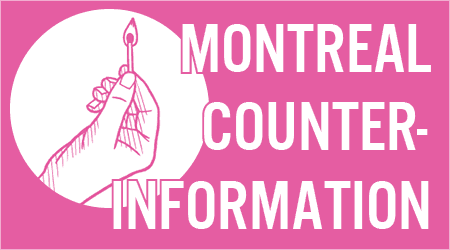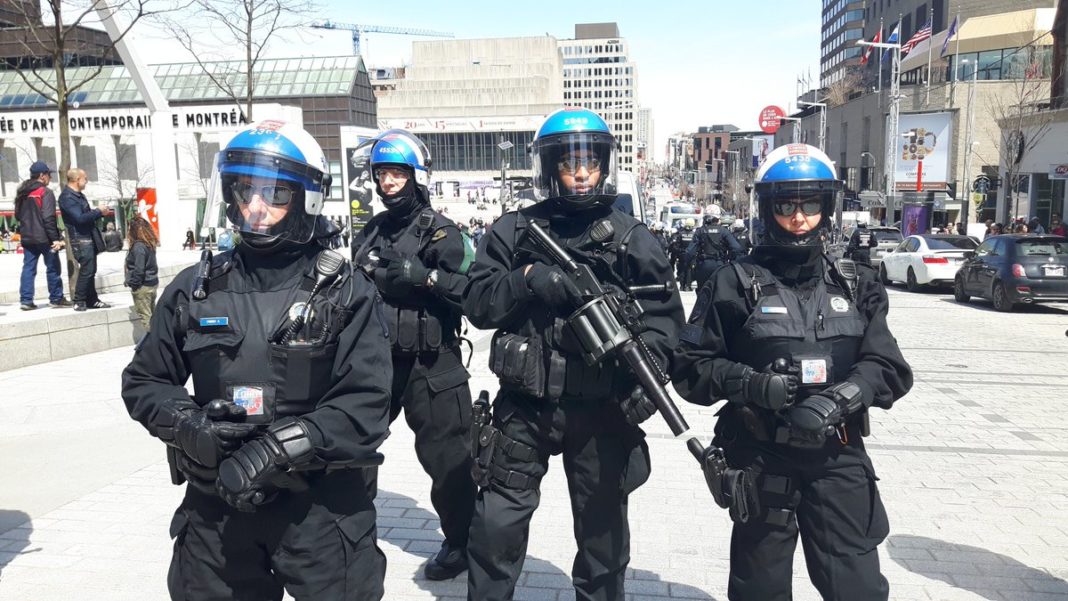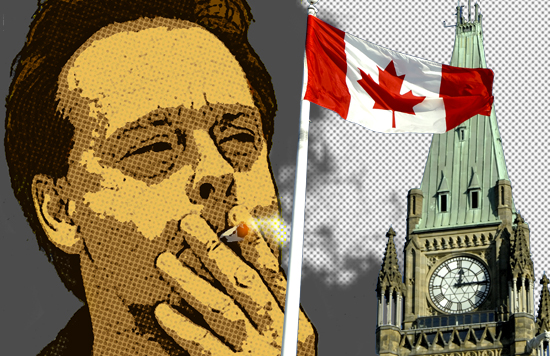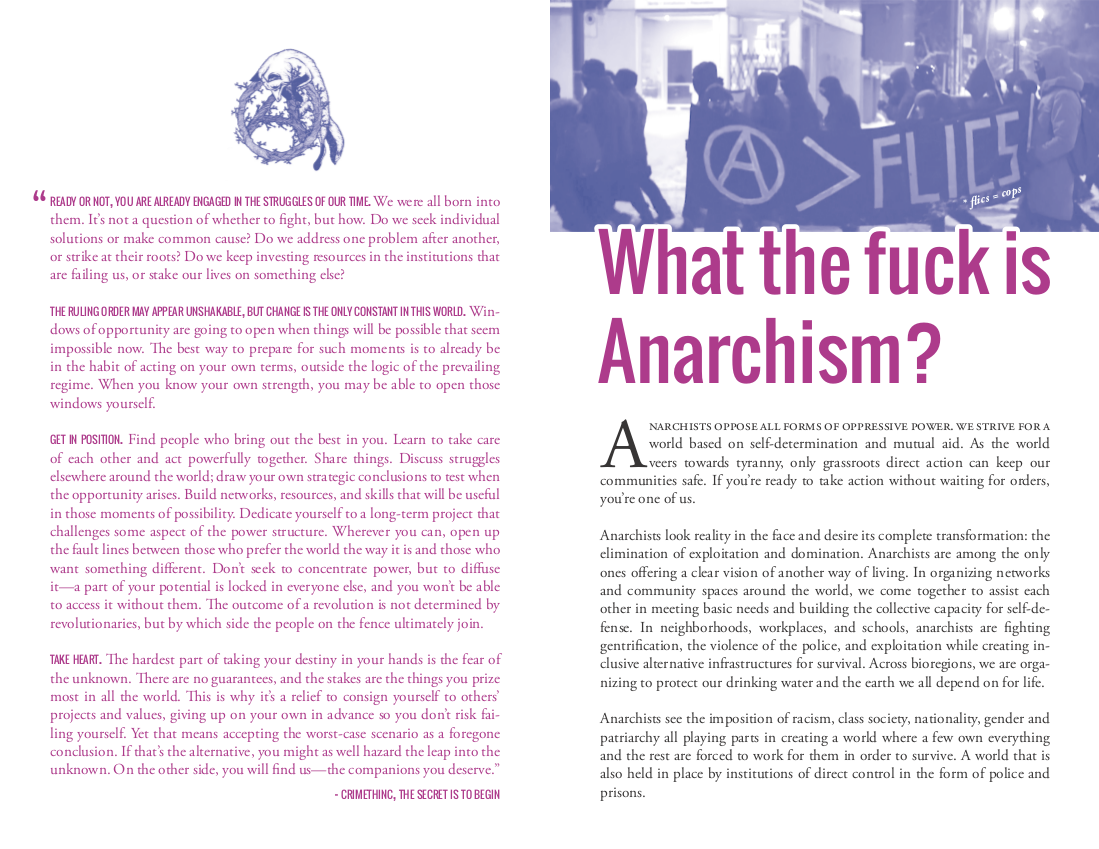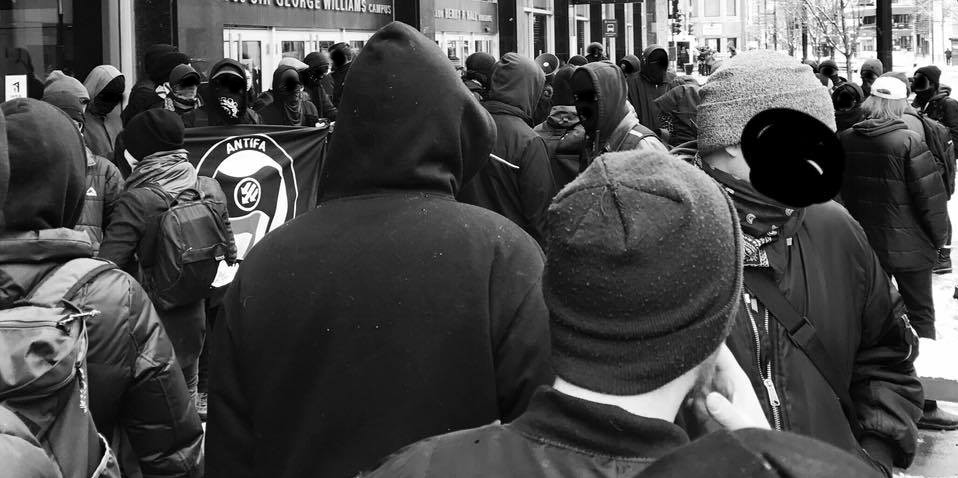Anonymous submission
This text was originally sent to Black and Green Review. They never responded.
Disclaimer—in North America, which is my context, land defense struggles are often from indigenous perspectives, and they are struggles based on reclaiming or defending land from the state. I can only speak from a settler perspective, and my critique is specifically of land defense through a futurist lens and the deification of nature as it is practiced by settlers in North America.
The Religion of Green Anarchy:
a critique, a question, and a proposal
Many land defense struggles in North America focus on the purity of the wild when coming from a settler green anarchist perspective. Based on the propaganda and analysis that comes from this perspective and out of these struggles, we seek to defend these spaces from industrial civilization (and through this, colonial expansion) because we are defending the last ‘wild’ areas, from which we can subsist. This belief in ‘wild’ and ‘untouched’ spaces is not only unfounded, but falls into the creation of a morality of the wild, which takes on a religious tone. This religious tone can be broken down into: a) ‘good’ wilderness vs ‘bad’ wilderness, and b) preservation of a utopia or ‘heaven’ for future generations. Oftentimes, settlers in North America lack a coherent culture – there is no North American culture outside of capitalism. This religious tone can be understood as a response to this cultureless void, as we try to create a context for ourselves—an anchoring for our identities.
When we approach land defense struggles from this moralist and future-oriented perspective, we limit the potential of these struggles. The primary drive of engaging in land defense struggles for future generations can prefigure the struggles themselves. This leads to an acceptance of concessions and defeats, as we are able to convince ourselves that a failed land defense is contributing to a culture of resistance, with which the future generations can engage. What would these struggles look like were we to see them as book-ended by our life and death, breaking from the limitations of morality, culture, or the future generations? What trajectory would a land defense take if individual sensory experience were the guiding principal?
CRITIQUE
1) Wild and untouched spaces don’t exist, and agriculture isn’t the original sin.
The definition of a pure space is often tied up in settler misconceptions of the ‘pure’ native and hunter-gatherer societies – as those untouched by colonization or agriculture. This ignores that many nations, pre-contact, managed wild spaces. Examples of this are maintaining burnsites for berry-picking, creating clam gardens, and complex territorial management and distribution. This isn’t meant to be a generalization about all nations—just examples of how some nations, pre-contact, interacted with the wilderness in ways that are similar to agriculture.
Green anarchist analysis and critiques cite agriculture as the beginning of the end of hunter-gatherer lifestyles. I don’t contest that agriculture necessitated more sedentary lifestyles, acted as a colonial force, and created delayed-return lifestyles and economies that eventually resulted in increased domestication. However, it was not the driving force that enabled and created these storylines or this history. Desire for ‘power-over’ through enforcing hierarchy is a more likely culprit, and comes from individuals who facilitate a certain society. This isn’t to say that hierarchy and desire for power over are inherent in nature—not at all—but to caution against the strong correlation between nature and perfection, agriculture and humanness/domestication—these are false comparisons. Nature is imperfect, and it’s incorrect to fetishize the natural world as being pre-domination. Destroying agriculture or returning to a hunter-gatherer lifestyle will not destroy society and capitalism. This is evidenced by the hunter-gatherer societies who reproduce systems of morality and norms similar to those in North American capitalist culture. Perhaps the ways in which these moralities or norms were reinforced is different from our current society (for instance, shaming as opposed to prison)[1. For specific examples of shaming as a method of ensuring social norm compliance, you can read the “Use of Humour in Hunter-Gatherer Governance” section of Peter Gray’s “Play as a Foundation of Hunter-Gatherer Social Existence”.], but it’s important to note that these norms existed, and were socially-imposed.
Pure wilderness is a civilized concept, and shouldn’t be used to determine which territories warrant defense, or as a wildness to return to.
2) Nature is a whore.
a) Purity of the wild as morality.
Within green anarchist analysis, ‘pure’ wildness (we can replace ‘pure’ with ‘undomesticated’ or ‘wild’) is deserving of preservation and defense, whereas ‘impure’ (domesticated) wildness is not. This is evidenced by the struggles which receive the most attention from the settler community—largely, anti-resource extraction land defense in undomesticated areas, with clean drinking water, a focus on preserving intact salmon runs, etc. This moralization of nature, and distinction between good and bad nature, allow for good nature to accumulate value (as it is defended) and bad nature to depreciate in value (as it is undefended), leading to the commodification of nature.
We also see this language of morality and purity in green anarchist publications, as they create standards for living a ‘good’ vs ‘bad’ life. A morally ‘good’ life is a hunter-gatherer lifestyle, while a morally ‘bad’ life is one that resides in or relies on the city and industry, or practices agriculture. The fact that projects such as the Feralculture Project, which rely on capitalism and colonialism, are lauded and uncriticized, demonstrates that the only barometer for green anarchist morality is pure vs impure wilderness.
This obsession with a ‘pure’ wilderness is very similar to judeo-christian obsession with the pure and untainted body—virginity. As the human hand corrupts nature through management and development, the heathen hand corrupts the woman through sexuality and desire.
b) “This was here before you, and will be here after you.”
“The future is primitive, whether we see it or not.”
–Black and Green Review #2
This moralization of nature—good vs bad nature, some worthy of defense and other that is tainted by human contact—is always presented in the context of future generations. Again, when we look at the propaganda put out by land defense struggles, it is frequently through the lens of preservation for the future—not the present, individual sensory experience.
This is dangerous not only in that it nurtures an unreal hope that there is a better and happier future awaiting us should we lead morally-correct lives, but because it places our struggle in this future as opposed to the present. This becomes the same hope as religion– one that allows us to withstand the banal and depressing day-to-day through the guarantee that at some point on the future, all will be better. Green anarchist moralists live either in the past—by idealizing hunter-gatherer societies—or in the future—by hoping for a ‘primitive future’. Similar to many religions, where one lives life not for now or even in now, but for a life after death. The present becomes time killed reading and learning about the lives of saints, the life of god, the mythics and stories of the bible.
This futurist mentality is particularly dangerous for people with uteruses. Since the highest value of life is set for the future generations, our bodies have unfortunately and oftentimes unintentionally been transformed into tools for the green anarchist project. Any hope or value that anarchists place upon the future generations originates from a reliance on the principle that every individual, if exposed to the correct conditions, experiences, and ideas, will identify with anarchist principles. As any person who spends time with children will know, they are their own people. Even if they grow up in a co-operative and caring environment, surrounded by a strong critique of society and power, they may still turn out to be individuals who profit from power and hierarchy. They may turn out to be our enemies, not our allies. This critique of the valorization of the child is brought forth in Baeden 1, a journal of queer nihilism, in the following statement:
“All political positions, he argues, represent themselves as doing what is best for the children. Politicians, whatever their parties or leanings, universally frame their debates around the question of what policies are best for the children, who keeps the Child safest, or what type of world we want to be building for our children. The centrality of the Child in the field of the political is not limited to electoral politics or political parties. Nationalist groups organize themselves around a necessity to preserve a future for their children, while anarchist and communist revolutionaries concern themselves with revolutionary organizing meant to create a better world for future generations. Politicians concern themselves with different children depending on their varying from ideologies, but the Child stays constant as a universal Möbius strip, inverting itself and flipping so as to be the unquestioned and untouchable universal value of all politics. Politics, however supposedly radical, is simply the universal movement of submission to the ideal of the future—to preserve, maintain and upgrade the structures of society and to proliferate them through time all for the sake of the children.”
The majority of land defense struggles are strongly defined by this concept of ‘for the future generations’, and the idea that we struggle against industrial civilization for the future, not for now. Though I am uncertain of the origin point of this reasoning, it is my experience that it is frequently referenced in native land-defense struggles. It is not logical to take the same perspective of native land-defense and super-impose it onto our lives and our struggles as settlers. The term ‘ally’, though corrupted by settler-guilt and identity politic olympics, originally meant two groups of different origins fighting for a common outcome. With this definition in mind, it does not make sense for settlers to appropriate various indigenous understandings of historical rooting and ‘fighting for the future generations’. A native friend once explained to me that colonization had so thoroughly eroded her current community that it was impossible for her to conceive of fighting for anything other than the future generations, because she believed that healing would require more than one generation. This is fucking intense, but to claim this as a settler reasoning for struggle would require a lot more reflection and intention than it is ever attributed.
One explanation for why settlers hold on to this concept is that it provides a generally-understood answer for the question of why we engage in land defense struggles, and has become widespread as a reasoning. As a result, this perspective precedes the struggles themselves and influences how they play out. If we invest ourselves in the future and can see our struggles, regardless of their outcome, as contributing to a culture and history of conflict, we are more likely to concede defeat or compromise before we reach our goals.
What if we fought as though our lives depended on it? Not the lives of our children, or our friend’s children, but our lives, right now, in the present? This would make for a very different type of struggle. Potentially short-lived, but that’s the way it is with uncompromising struggles.This is neither a critique nor a conclusion, but a question.
PROPOSAL
Everything on this earth has been touched, in one way or another, by humans and society. According to green anarchist morality everything is impure. This doesn’t mean that a polluted river, or an abandoned city lot is undeserving of protection or defense. In contrast, if you look at land defense through a non-humanist perspective, these impure areas are worthwhile to defend in that they in no way can be beneficial to humanity or society—the mercury-laden soil can’t produce medicine or food, but is still valuable to the multitude of species that exist within it.
A proposal for how to value the impurity of the wild would be to destroy any attempt to create culture in the cultureless void. This cultural void is a gift and a step closer to life free of imposed morality, cultural stigma and codes. And what a gift, an identity formed only by the individual (and their subjective experiences)! We should embrace our lack of culture, this void, instead of trying to fill it with god and religion by another name. We can do so by trying to destroy any attempt to create this culture through participation in the human strike.
The human strike “…defines a type of strike that involves the whole life and not only its professional side, that acknowledges exploitation in all the domains and not only at work. Human strike can be a revolt within a revolt, an unarticulated refusal, an excess of work or the total refusal of any labour, depending on the situation. There is no orthodoxy for it. If strikes are made in order to improve specific aspects of the workers’ conditions, they are always a means to an end.”
The creation of culture in green anarchy/land defense struggles is a reaction to a cultureless void. The human strike in terms of land defense can be seen as refusing to acknowledge ‘futurism’ by refusing to participate in creation of a culture through reproduction and faith in the future generations. It can take the form of refusing to participate in the morality of the wild by refusing to act for the future generations, and acting only for ourselves and our individual sensory experiences. “But human strike is a pure means, a way to create an immediate present here where there is nothing but waiting, projecting, expecting, hoping…To produce the present is not to produce the future.”
Participating in the human strike is to not allow our bodies to become tools for the struggle for the future, through either reproduction[2. Having children doesn’t exclude you from participating in the human strike, as I am defining it. If you want to have children, and it gives you immediate joy, that is centering your body on your own experience. It is the investment in the children and hope that they will somehow contribute to a struggle in the future that contributes to a creation of culture.] or by dedicating them to tasks that facilitate a society that maintains itself through coercing its participant into relying on a hope[3. “Despite the madness of war, we lived for a world that would be different. Do you really think that, without the hope that such a world is possible, that the rights of man would be restored again, we could stand the concentration camp even for one day? It is that very hope that makes people go without a murmur to the gas chambers, keeps them from risking revolt, paralyses them into numb inactivity. It is hope that breaks down family ties, makes mothers renounce their children, or wives sell their bodies for bread, or husbands to kill. It is hope that compels man to hold on to one more day of life, because that day may be the day of liberation…Never before in the history of mankind has hope been stronger than man, but never also has it done so much harm as it has in this war, in this concentration camp. We were never taught how to give up on hope, and this is why today we perish in gas chambers.”—Tadeusz Borowski, Auschwitz, our home (a letter)] for the future. Another aspect would be a destruction of capitalism, society, and culture, while at the same time recognizing and disassembling the trap of the culture of green anarchy/morality of the wild.
Concretely, an example of how to engage with this definition of the human strike would be to occupy land, and practice the skills for subsistence and life independent of society, without acknowledging the state. Independence from society can mean learning to sustain oneself outside of it. In cities, this often takes the form of stealing and scamming. These are and beautiful anti-social ways of surviving—they destroy the relationship to and power of money, rendering it ridiculous, as well as the individual actualizing their desires in conflict with society. Hunting, fishing, harvesting wild foods, etc. achieve the same goals as scamming and stealing, as long as they are acted without consent of the state (poaching, for example). These forms of subsistence make a mockery of money, while also allowing the individual to thrive independent of and in contradiction to the state and society.
By learning these skills, we doubly participate in the human strike by dedicating our time to something that is completely irrelevant and useless to capitalism and society. Building a log cabin, snaring rabbits, or harvesting maple water–these things we do for our enjoyment and our enjoyment only. This is a passive form of resistance, in that it is just diverting our energy from production for society towards our own end goals, our own desires, our own joys. This could fall into the trap of drop-out culture, but differs in that it understands the necessity of defending the areas of our enjoyment against incursion, and attack on resource extraction projects that threaten our ability to continue to live unmediated by the state. Through pairing dedication of time to joyful projects irrelevant to capitalism with refusal to seek consent from the state and a strong investment in land defense, this can become part of a coherent and conflictual life.
At this specific time in North America, power is accumulated in the resource extraction projects throughout the North. To participate in the human strike would mean attacking where power is accumulated and where the state’s intervention is weakest. Rural and more northern areas, where these resource extraction projects are located, have a less developed infrastructure for surveillance and repression than cities.
A very regional and specific example of how to engage with the human strike would be to occupy land that has been slated for development, use the land to learn and practice subsistence skills that you enjoy, and then fiercely defend it from the state, without concessions or compromise. Practically, if you wanted to participate in anti-colonial governance structures, this could take the form of seeking permission/complicity from hereditary governance structures, and occupying land for subsistence purposes. The goal of this occupation would primarily be conflict, not preservation. These spaces may be short-lived, but this would transform land defense from a pseudo-religious/future-oriented project into the daily action of our desires.
These spaces would also not be isolated from urban struggles, but a complement to them. Though power is accumulated in these resource extraction projects up north, there are still ties to the urban environments that provide the workers, house development offices, and plan the projects themselves. These occupied spaces could also become refuge for those who are avoiding repression. There are no cameras or randomized ID checks in the forest or the mountains. Search parties have little success trying to find people who don’t want to be found.
This seems like a pretty extravagant proposal. To occupy land, learn the subsistence skills that give us joy, and then militantly defend it. All with the understanding that we do this for ourselves, for our own individual sensory experience, with no reliance on the future generations or with the safety blanket of ‘we’re contributing to a culture of resistance’. There are already several land defense camps which demonstrate aspects of this proposal, primarily from a First Nations land reclamation perspective. Unist’ot’en, Madii Lii, Lax U’u’la, and the Standing Rock Sioux anti-pipeline camps are all examples of successful and inspiring struggles. The above critiques and proposal are not geared towards these struggles, but towards settler intervention and green anarchist analysis that comes out about these struggles. Part of the destruction of society and capitalism is acting from a place of decolonization/anti-colonialism (colonialism facilitates capitalism, capitalism facilitates colonialism). Any land occupation that occurs in North America, if it is to be successful in not reproducing the power structures of capitalism and society, must include an anti-colonial/decolonization analysis. This would mean creating links with the pre-existing land defense projects, finding affinity with the individuals whose territory is under attack, and figuring out where our struggles overlap.
This is also not a proscription for how to participate in the human strike and land defense, but a proposal, such that those who feel affinity with the ideas presented can choose to participate.


